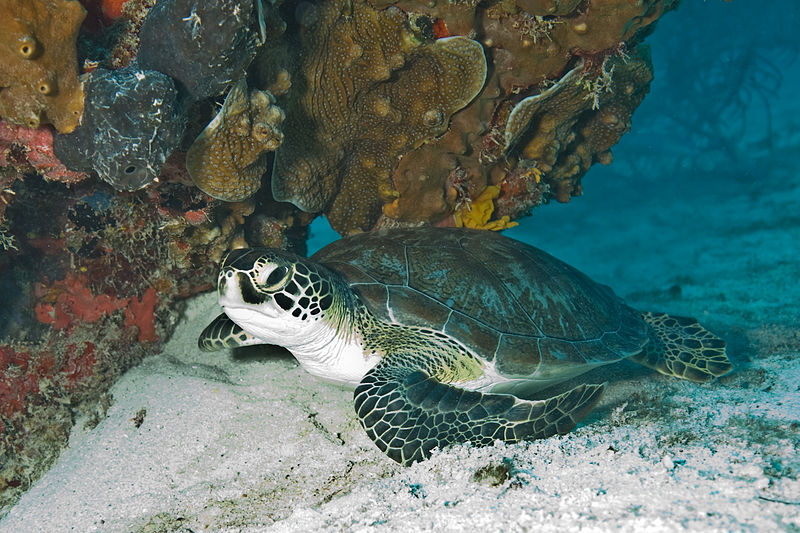The massive Liquefied Natural Gas (LNG), Coal Seam Gas (CGS) and coal facilities and ports currently underway or planned in the Great Barrier Reef World Heritage (GMRWHA)Area will destroy and degrade critical nesting, feeding and/or migration habitat for six globally significant populations of marine turtles in Queensland, Australia, and beyond. The construction and operations of these fossil fuel projects also directly harm sea turtles due to dredging, blasting, lighting, ship strikes, toxic pollution, marine debris, noise and disturbance.
Already, sea turtle strandings along the Queenlsand coast have spiked over the past two years as new industrial projects got underway, totaling more than 3,300 sea turtles. During the first nine months of 2013, 650 sea turtles were found or reported stranded. These levels are unprecedented and have been attributed to a combination of natural and manmade factors including flooding, dredging and vessel strikes, and fisheries bycatch. In response, the Queensland state government flagged The ports of Gladstone, Townsville and Moreton Bay were flagged as “hot spots” for turtle and marine wildlife strandings.
In Gladstone Harbor alone, sea turtle strandings escalated to 434 total sea turtle strandings for 2011 and 2012. Ship strikes alone killed 45 turtles over two years in Gladstone Harbor since Curtis Island’s LNG project began, compared to an average of two per year for the previous 10 years.
Sick and Dying Turtles: An unknown Great Barrier Reef sickness already plagues vulnerable Queensland marine turtle populations. In recent years unprecedented high numbers of dead turtles washed up dead along the Queensland coast. While pesticides and floods were blamed, the problem is so serious that scientists are now collaborating to investigate marine turtle health and how much mining, dredging and rapid industrialization of the GMRWHA contributes to the problem.
One recent study conducted after high numbers of green sea turtles stranded near Gladstone found elevated levels of heavy metals in the tissues of the dead animals, a sign that toxic contamination from industrial projects were likely contributing to the problem.
References:
- Dobbs, K. Marine Turtles in the Great Barrier Reef World Heritage Area, Great Barrier Reef Marine Park Authority 2001
- Monitoring of Coastal Sea Turtles: Gap Analysis , 5. Flatback turtles, Natator depressus in the Port Curtis and Port Alma region, Ecosystem Research and Monitoring Program, Gladstone Ports Corporation, Western Basin Port Development
- Strandings Hot Spots, Department of Environment and Heritage Protection, Queensland government. http://www.ehp.qld.gov.au/wildlife/caring-for-wildlife/stranding-hotspots.html
- Sobtzick, S., Grech, A., Coles, R., Cagnazzi, D. and Marsh, H. (2013) Status of the dugong population in the Gladstone area. A Report for Gladstone Ports Corporation Limited for Project CA 120017: Monitoring of Dugongs, Centre for Tropical Water & Aquatic Ecosystem Research (TropWATER) Publication, James Cook University, Townsville,
- Sea turtle conference addresses Great Barrier Reef sickness spike, theguardian.com, Thursday 18 July 2013 http://www.theguardian.com/environment/2013/jul/18/sea-turtle-conference-sickness-spike http://seaturtlefoundation.org/workshop/




